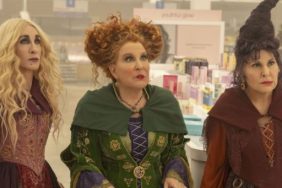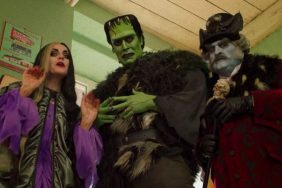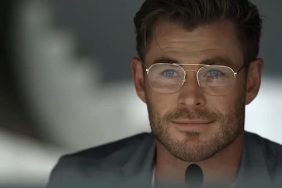I didn’t understand 14-year-old girls when I was a teenager and I sure as hell don’t understand them now, because they were shrieking like Zours-addled banshees at the screening of The Woman in Black. I presume they were all there to see Harry Potter star Daniel Radcliffe’s big non-franchise debut (and where were all of you when My Boy Jack came out?), because a stodgy period piece about British people in parlor rooms doesn’t seem like the typical tweener’s cup of tea. Come to think of it, tea probably isn’t their cup of tea, but they sure seemed to like The Woman in Black. Which makes sense. Only a 14-year-old would find this movie scary.
Let’s get the obvious out of the way first: Daniel Radcliffe is a fine young actor who has proved himself more than worthy throughout the eight Harry Potter films. He is also, and I’m sorry Daniel, thoroughly miscast in The Woman in Black as a grown man with a child. At one point an ancillary character asks him how old his child is. I think he says “Four.” My kneejerk response was to mentally add, “Not you, your child.” The world-weariness of Radcliffe’s protagonist and family man character arc is obviously more befitting an older gentleman. It’s not his fault the part was poorly adapted to his screen presence, but it is his fault that he spends the entirety of The Woman in Black looking sullen and entering every room as if he’s forgotten why he went in there. I kept expecting him to run into Eddie Izzard arranging matches.

The Woman in Black is not a very good film, but the premise is nicely creepy: a small town in turn of the (last) century England is haunted by a supernatural lady who makes all the children kill themselves. Radcliffe plays a widower who comes to town to settle some legal affairs and gets swept up in the local mystery. But the film feels remarkably barren. Most of The Woman in Black genuinely seems to consist of Daniel Radcliffe just walking into rooms and looking around. He carries the film but has so precious little to do that for once I found myself actually praying for more dialogue just to fill out the storyline. Excellent character actors like Ciarán Hinds and recent Oscar-nominee Janet McTeer poke their heads in from the periphery now and again, but have little to contribute. Everyone besides Radcliffe seems to exist to establish the impact the eponymous specter has had on the local community, but they have no particular relationship to the damned protagonist.

With no plot, subplot or even thematic material to work with, director James Watkins is forced to rely on jump scares to fill out his running time. A lot of them work, most do not, but there are so very damned many that you’d be forgiven for thinking that it basically averages out. As the patrons evacuated the theater following the show I heard someone say, “I never thought a movie could be scarier than The Exorcist, but this chilled me to my toes.” Scariness is a subjective experience, so I won’t argue with their opinion, but I suspect they were confusing “scary” with “startling” in that statement, much in the same way that folks without a medical degree often confuse “lungs” with “throat.” For his purposes the words are interchangeable, but for the sake of posterity let’s be clear: The Woman in Black lacks sufficient understanding of subconscious dread to evoke genuine terror, but if you’re just looking to jump around a lot, it’s about as effective as a House of Pain video.
One final thought. I know that The Woman in Black is based on a novel, so perhaps the ending was set in stone, but the film ends with such a distracting parallel to the Harry Potter franchise that it’s hard to imagine how it survived the development phase, at least after Daniel Radcliffe came aboard. Come to think of it, it’s hard to imagine how most of this film survived the development phase. It’s a thin movie on every level, not particularly frightening, and a disappointing use of all the talent involved. It’s an obvious joke, but screw it: No points for Gryffindor.









